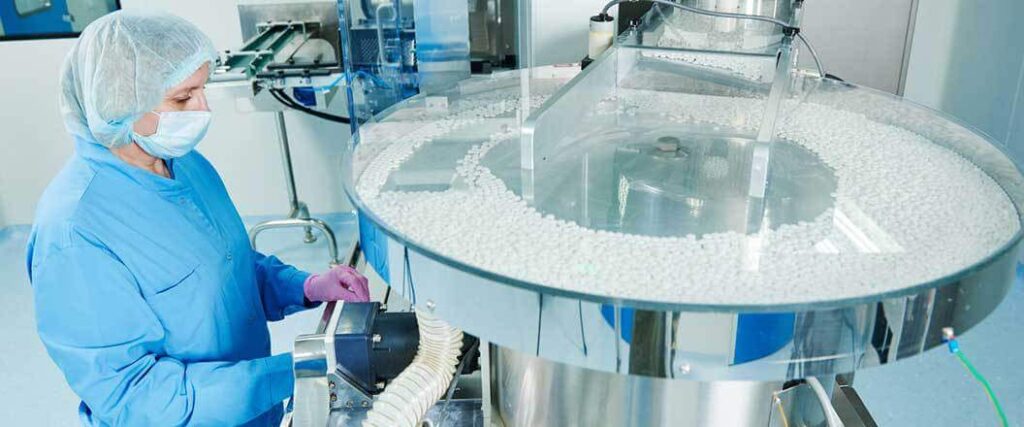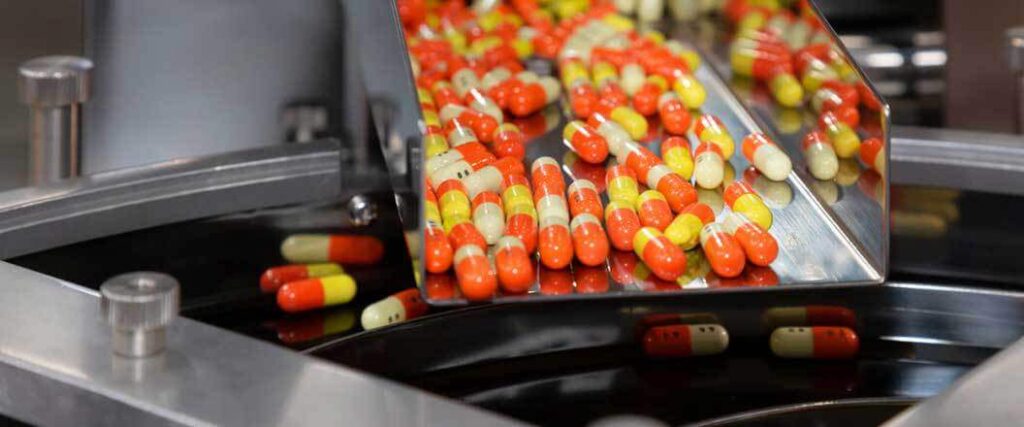Pharmaceutical temperature controlled transport is among the most specialized refrigerated transport services available. From vaccines to cancer-fighting drugs and everything in between, strict temperature maintenance is a must. With the right equipment, it’s possible to successfully ship cold chain pharma supplies everywhere in the world.
The Food and Drug Administration (FDA) of the United States established requirements for the safe manufacture and packing of all drug products. Carriers can access Good Manufacturing Practice (GPM) guidelines for their refrigerated services while getting specific temperature requirements from the manufacturers themselves.
See how transporting pharmaceutical products safely is possible and opens up a variety of business opportunities.
The global market for pharmaceutical products is worth at least one trillion dollars. It’s jumped in recent years because of growing demands with no signs of slowing down. Products such as the Covid-19 vaccine and related medications are still in high demand.
However, it isn’t just the specialized products that need refrigerated transport. Many common medications available over the counter or used commonly in hospital settings need the same care.
Sources like the World Health Organization (WHO) note that many drug companies spend about 6% of their budgets just on logistics. Just what does that look like for a trillion dollar industry? In terms of shipping alone, it means billions of dollars.
| Transport Mode | Annual Spending (USD) |
| Truck and Ground | $2.7 billion |
| Ocean | $100 million |
| Air | $7.8 billion |
While these figures may pre-date the Covid-19 surge in biopharma shipping, the trends remain accurate. Finding the best cold chain solutions for sensitive products remains a priority for pharmaceutical companies.
To meet safety and security standards, companies can focus on carriers that have the WHO’s Good Distribution Practice (GDP) certification.
The WHO’s standards cover logistics needs such as:
These standards are worded in a way that allows carriers to adjust them for air, sea, and ground shipping. Conditions from mode to mode can change and standards may be easier to apply in some cases.
However, the guidelines of GDP aren’t global requirements. Never assume that any company, even one advertising medical cold chain shipping, has this certification. Take the time to find out, or end up paying out when things go wrong. Guidelines also depend on where you are preparing to ship your products.
At the moment, pharmaceutical shipments going in and out of the European Union do need to follow GDP guidelines. Anyone planning shipments of European medications needs to keep that in mind.
The U.S. has yet to officially adopt GDP guidelines. However, the FDA has been making it a requirement that new products have specific transport requirements on file.
The final big player in new regulations is China. Recent efforts to step up safety standards led China to adopt the Good Supply Practice of Pharmaceutical Products.

All medications have a temperature threshold. From over the counter (OTC) ibuprofen to prescription liquid insulin, the right temperature is needed for the medication to work as it’s meant to.
Temperature control is important because it protects the effectiveness and safety of all medicines.
Some drugs, like those in pill and tablet form, can tolerate more changes in temperature. Others, like insulin or some vaccines, are ruined if the cold chain is broken even by a few degrees.
The wide range of possibilities means that no agency, whether it’s the WHO or the FDA, can create a standard of temperature ranges. Transport services have to follow the manufacturer’s instructions for recommended temperature range.
Medical and pharmaceutical shipping is a worldwide need. In many cases, the only way to get medications and vaccines into struggling areas is through shipping. There are many places in the world that don’t have the structure to develop or produce even basic drugs.
The pharma cold chain is the international medical supply chain connecting manufacturers with buyers.
Because of the sensitive nature of the goods, there are a number of carriers and freight forwarders that only focus on medical cold chain management.
These forwarders help manufacturers from start to finish by providing storage and transport services such as:
Since temperature is so important, trusting all the services to the same company actually makes sense. The greatest danger to cargo is always going to be transfer touchpoints. Unfortunately, the chances of temperature changes between one company and another are higher than average.
Statistics vary, but many sources report similar worries about temperature control.
| Estimated products damaged due to broken cold chain | 20% |
| Percentage of carriers that regularly meet with manufacturers | 17% |
| Estimated annual financial loss due to disrupted cold chain | $35 billion |
| Companies reporting temperature fluctuations | 44% |
| Carriers not using location and temperature monitoring | 25% |
It might be hard to not be discouraged by some of these numbers. We want to believe that all companies hold health and safety to only the highest standards. This is why anyone looking for transport or packing solutions for pharma products needs to do their research.

While the recommendation is for all pharma products to ship in controlled temperatures, we’ve also learned that some are more stable than others. Within the pharmaceutical industry, there are two main types of products.
The groups are separated by product manufacturing differences:
Despite their differences, there are still temperature control needs within both types. Many chemical-based medications can safely ship in ambient temperatures so long as there aren’t big changes throughout the trip.
This includes products such as:
So long as these products stay within standard room temperature ranges, usually 55 to 70 degrees Fahrenheit, those basic safety standards are met.
Biopharma products, on the other hand, are more delicate and prone to damage if temperatures only change a couple of degrees. Even if the right temperature is kept, these products are still easily damaged if exposed to too much light, bad humidity, or even intense vibration.
The more sensitive biopharma products include:
Bad handling can make these useless to patients. It’s also potentially dangerous to the people responsible for each step in the shipping process.
There are no guarantees in the shipping business, especially not in the cold chain shipping business. That said, there are a number of different arrangements and practices that minimize damage and product loss.
Even small shipments of medications can cost a shipper thousands or even millions of dollars when multiplied across several deliveries. Smart packaging solutions are worth every penny.
Cold chain packaging usually falls into two categories.
We’ll take a look at the pros and cons of each packing method and the best circumstances in which to use them.

Using passive packaging means relying on methods that are meant to work for a limited set of time and do not respond to surrounding changes.
This type of packaging may include:
Medications being shipped with passive methods can still arrive safely and for many they are a cost-effective way to meet GDP standards. You can use digital thermometers to track temperatures and double-check that materials were kept stable.
The drawback is that these methods have a limited time frame and will not take into account the surrounding environment. Even the best coolers will lose their chill after a number of hours. At that point, the products need to be repacked or have made it to their destination.
Additional dangers include:
Shipments that are meant to arrive at their destination within 24 to 48 hours can easily ship this way. The time frame depends on how efficiently products are chilled and the exact type of passive method being used.
Air and truckload transports usually carry pharmaceutical products this way because time frames are much shorter compared to ocean services.
Active packaging relies on powered cooling methods that can be adjusted to specific temperatures for as long as they can remain fueled or charged.
The most common form of active packaging is the use of refrigerated containers.
Quality and ability vary from type to type, but they serve the same basic purpose. A well designed unit can keep products inside at constant temperatures no matter what the outside environment is like. Many can be adjusted to account for sudden temperature changes.
Although these containers are meant to keep things cold for a longer period of time, most shippers and carriers don’t want to risk long journeys. This is one of the reasons why air shipping is still the preferred way to transport pharmaceuticals.
Ocean shipping can take weeks which increases the window of time for something to go wrong.
At the end of the day, any precaution that shippers and carriers can take to protect pharmaceutical goods during transport saves them money and time.
The ability to provide quality medications and life-saving treatments around the world is more possible now than ever before. USA Refrigerated Freight has the experience and access to partners to make your pharmaceutical temperature controlled transport needs a reality.
Powered by R+L Global Logistics, USA Refrigerated Freight can assist will all types of cargo transport.
Call us today to speak with refrigerated freight specialists at (866) 849-2713. Complete an online form today and an agent will respond shortly to answer any questions you may have.
USA Refrigerated Freight
315 NE 14th Street #4122
Ocala, FL 34470